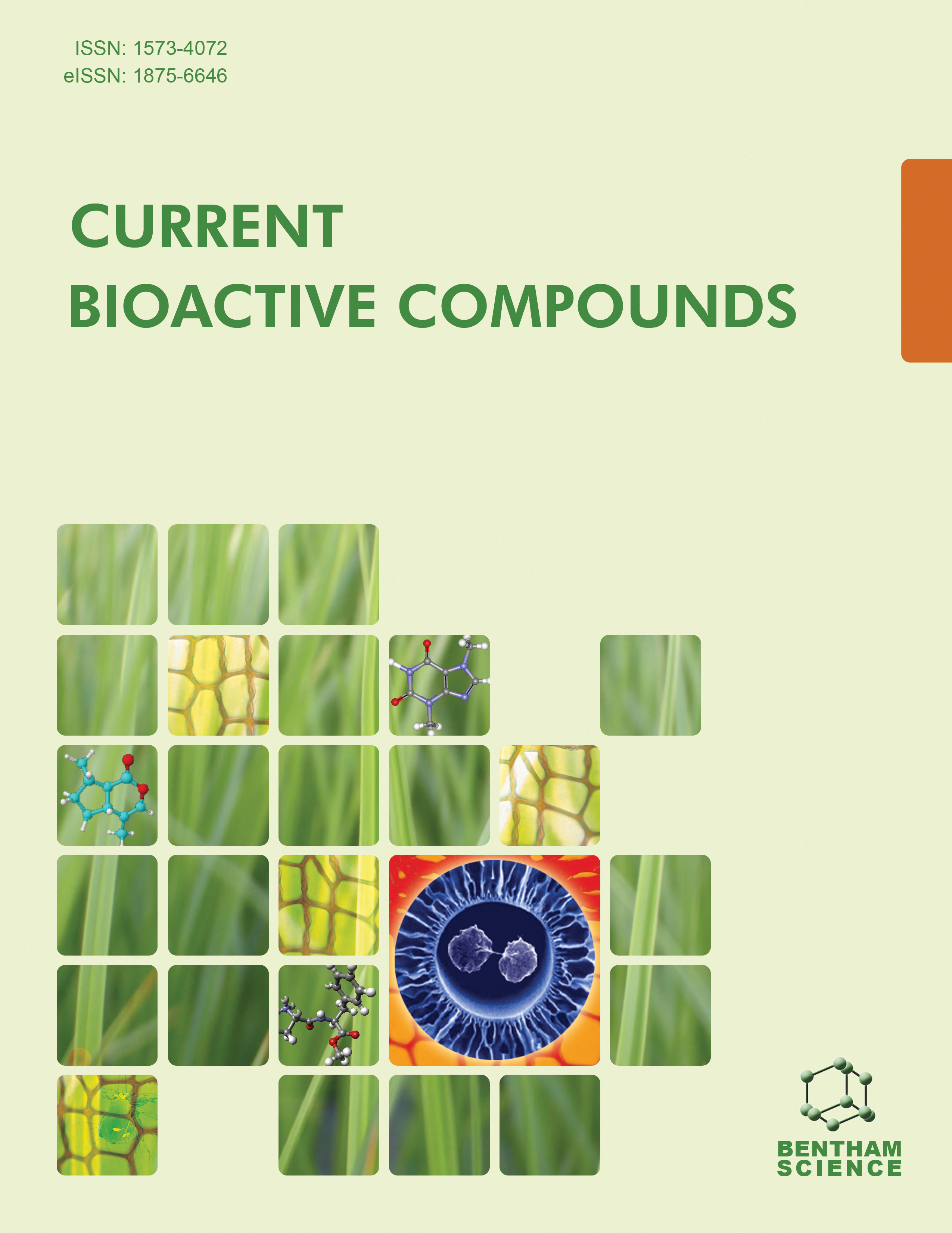- Home
- A-Z Publications
- Current Bioactive Compounds
- Previous Issues
- Volume 6, Issue 1, 2010
Current Bioactive Compounds - Volume 6, Issue 1, 2010
Volume 6, Issue 1, 2010
-
-
Editorial [Hot topic: Advances in Therapy of Organophosphate Intoxication (Guest Editors: Carlo Santini and Maura Pellei)]
More LessBy Zoran RadicOrganophosphates (OPs) are still one of major classes of chemicals used in pesticide control worldwide. Through their widespread application, large human populations are continuously exposed to OPs. While this particularly holds for developing countries of the third world where a number of pesticide preparations banned in the West are still in use surprisingly high incidence of individuals with detectable levels of OP residuals i Read More
-
-
-
Cholinesterase Reactivators as Prophylactics Against Nerve Agents
More LessAuthors: Jiri Bajgar, Kamil Kuca, Josef Fusek, Daniel Jun and Lucie BartosovaProphylaxis against nerve agent intoxication is based on various approaches: Keeping AChE, key enzyme for toxic action of OP/nerve agents intact (protection of cholinesterases) is a basic requirement for effective prophylaxis. Detoxification realised by administration of the enzymes splitting the OP or evaluating specific enzymes (cholinesterases) is another possibility (scavenger effect). The antidotes currently used for the treatm Read More
-
-
-
Cholinesterase Interactions with Oximes
More LessAuthors: Z. Kovarik, M. Katalinic, A. Bosak and G. SinkoThe phosphorylation of the serine hydroxyl group in the active site of acetylcholinesterase (AChE) inactivates this essential enzyme in neurotransmission. Oximes are reactivators of AChE phosphorylated by organophosphorus compounds (OP) including insecticides and nerve agents. The effectiveness of oxime-assisted reactivation is primarily attributed to the nucleophilic displacement rate of organophosphat Read More
-
-
-
Kinetic Analysis of Oxime Interactions with Acetylcholinesterase as a Basis for the Evaluation of Oxime Efficacy in Organophosphate Poisoning
More LessAuthors: F. Worek, P. Eyer, N. Aurbek and H. ThiermannIn the past decades a vast number of oximes have been synthesised in order to identify effective compounds for the reactivation of organophosphorus compound (OP)-inhibited acetylcholinesterase (AChE). Up to now, oxime efficacy has been tested primarily in animal experiments. However, the accretive evidence of substantial species differences regarding kinetic properties of human and animal AChE Read More
-
-
-
Cell-Permeable Peptide Inhibitor of c-Jun NH2-Terminal Kinase for the Treatment of Diabetes
More LessDiabetes mellitus is a devastating disease and the World Health Organization (WHO) expects that the number of diabetic patients will increase to 300 million by the year 2025. A variety of peptides, known as protein transduction domains (PTDs) or cell-penetrating peptides (CPPs), have been recently characterized for their ability to translocate into live cells. Some studies have shown that this technology is useful for the treat Read More
-
-
-
Design and Synthesis of Aminocyclopentanol Glycosidase Inhibitors: Modification of Mannostatin A and Trehazolamine
More LessAuthors: Seiichiro Ogawa, Miki Kanto and Chikara UchidaConvenient synthesis of the α-mannosidase inhibitor mannostatin A from myo-inositol is described by a method, which is generally applicable for provision of aminocyclopentanols of biological interest. Elucidation of structure-inhibitory activity relationships was carried out by chemical modification, leading to discovery of a very potent amino(methoxy)cyclopentanetriol. Similar studies of the trehalase inhibitor trehazolin Read More
-
-
-
Mechanism of Conjugated Imine and Iminium Species, including Marine Alkaloids: Electron Transfer, Reactive Oxygen Species, Therapeutics and Toxicity
More LessAuthors: Peter Kovacic and Ratnasamy SomanathanThere is much evidence for participation of electron transfer (ET) functionalities in the physiological action of drugs and toxins. The main ET agents are quinones, metal complexes, aromatic nitro compounds and iminium and imine species. Some are usually formed as metabolites. The last category, the least well known, is the focus of the review. First, examples of imines and iminiums in various bioactive classes are provide Read More
-
-
-
Circulating and Vascular Bioactive Factors During Hypertension in Pregnancy
More LessAuthors: Alain F. Tanbe and Raouf A. KhalilNormal pregnancy is associated with significant vascular remodeling in the uterine and systemic circulation in order to meet the metabolic demands of the mother and developing fetus. The pregnancy-associated vascular changes are largely due to alterations in the amount/activity of vascular mediators released from the endothelium, vascular smooth muscle and extracellular matrix. The endothelium releases vasodil Read More
-
Volumes & issues
-
Volume 21 (2025)
-
Volume 20 (2024)
-
Volume 19 (2023)
-
Volume 18 (2022)
-
Volume 17 (2021)
-
Volume 16 (2020)
-
Volume 15 (2019)
-
Volume 14 (2018)
-
Volume 13 (2017)
-
Volume 12 (2016)
-
Volume 11 (2015)
-
Volume 10 (2014)
-
Volume 9 (2013)
-
Volume 8 (2012)
-
Volume 7 (2011)
-
Volume 6 (2010)
-
Volume 5 (2009)
-
Volume 4 (2008)
-
Volume 3 (2007)
-
Volume 2 (2006)
-
Volume 1 (2005)
Most Read This Month
Article
content/journals/cbc
Journal
10
5
false
en

Most Cited Most Cited RSS feed
-
-
Podophyllotoxin: Current Perspectives
Authors: Ying Qian Liu, Liu Yang and Xuan Tian
-
- More Less

